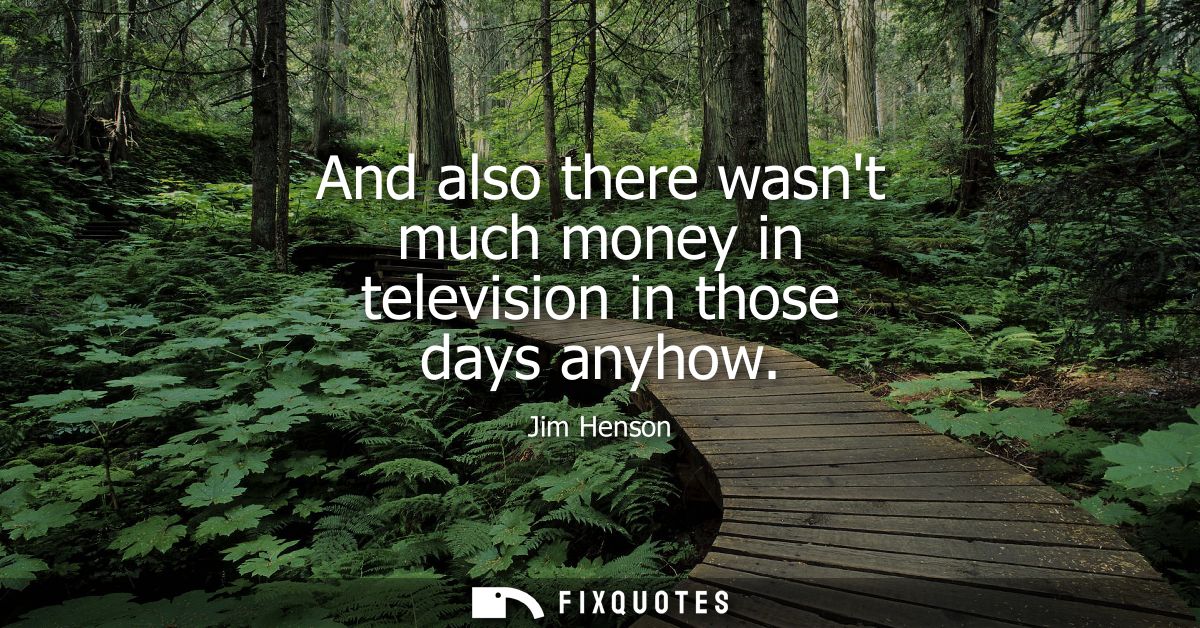"And also there wasn't much money in television in those days anyhow"
About this Quote
Jim Henson reflects on an era when the television industry was far from the lucrative powerhouse it is today. His mention of the lack of money in television suggests a period marked by limited budgets, constrained resources, and modest compensation for creators and performers. It was a time when people entering the field often did so more for passion, innovation, and creative expression than for financial gain. The early decades of television were experimental, networks were learning what worked, production methods were evolving, and the medium itself had not yet become deeply embedded in popular culture or advertising.
For Henson, who started working with puppets during this comparatively uncommercial phase, the financial limitations may have served as both a challenge and an unexpected advantage. With little money at stake, there was perhaps more freedom to experiment, take risks, and pursue unconventional ideas. Economic constraints forced creative solutions, shows were often produced on shoestring budgets, requiring ingenuity in set design, performance, and storytelling. The lack of commercial pressure provided a kind of artistic laboratory where innovation flourished, and new talent could emerge without the burden of huge financial expectations.
Henson’s remark about the absence of wealth in the industry also reveals much about the motivations of early television pioneers. It hints at a culture driven not by profit, but by the desire to entertain and push the boundaries of what television could accomplish. People worked hard, knowing that material rewards might be limited but recognizing the value in shaping a new form of media. This backdrop shaped the trajectory of figures like Henson himself, whose creative legacy might have been very different in a more commercially driven environment. Financial limitations of the early television industry ultimately fostered an atmosphere where passion and innovation could take center stage, laying the groundwork for the medium’s later explosive growth.
More details
About the Author

